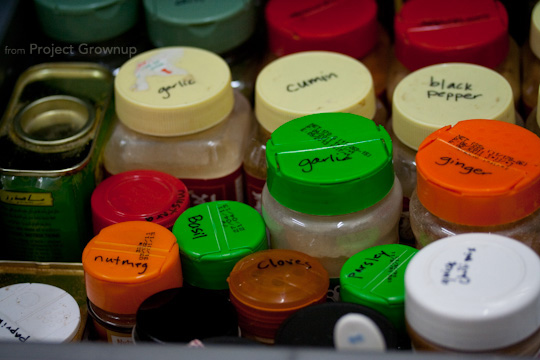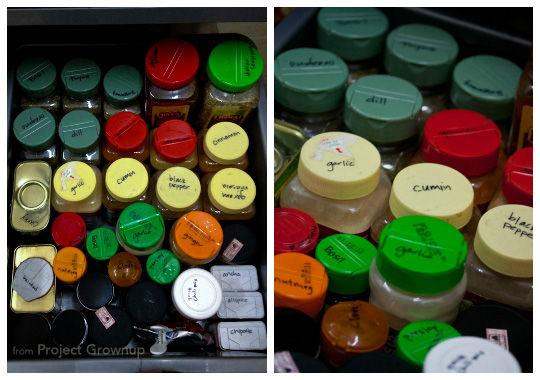Writing about a timer feels incredibly weird. How could something so simple be worth a whole post?
I’m still asking myself that. But the timer has become an invaluable tool for increasing progress on things that are important to me while decreasing life-time-spent on things that really don’t matter.
So, yeah. Today it gets its own post. Get ready to be sold on using a timer.
Why I Love the Timer
There are two primary ways the timer tricks me into doing more of what is important to me:
- It helps me get started on tasks or projects I’d rather keep procrastinating on
- It gently enforces self-set boundaries for work and play
The Timer Helps Me Get Started
I hate housework. I like to cook, and I like organizing, but I don’t consider those housework. The never ending carousel of dishes? Housework. Toilets? Housework. Floors? Housework.
As with lots of things I don’t like to do, I frequently “postpone” household tasks. This is a bad strategy. Things tend to pile up quickly and soon I’m totally drowning.
Timer to the rescue! I’ve found that if I “limit” the amount of time I intend to spend on a task, I don’t mind getting started. I might not be willing to tackle an impossibly messy room, but setting a timer for ten minutes and doing as much as I can during that time and then getting to walk away? I can totally do that.
And if I do it every hour or two, I’ll have worked on it for almost an hour in a single day. It’s like magic.
The timer also helps me get started on large projects. Planning for Christmas Eve and Christmas Day can feel like a huge task, but if I set the timer for 30 minutes and just write down everything that comes into my head, a half-hour later I’m well on my way to ironing out a reliable plan.
The Timer Helps me Set Boundaries
For Work
I use a timer all throughout the work day.
If I need to really move on a task or project, I’ll set the timer and force myself to not do anything else until it goes off. If I need to take a break, I’ll set the timer for 15 minutes or so and make myself get back to work when it goes off. If I have some work I need to do on the internet – like researching or trolling for tutorials – I’ll set a timer for about 8 minutes at a time to make sure I’m staying on track. It shouldn’t surprise you that its beep has found me perusing pinterest instead of finding the article I meant to send the Dude about neuroplasticity.
On a normal work day it goes something like this:
- 45-55 minutes of work (timed) on a single project
- 5-10 minutes of break (also timed) in which I refill my water glass and busy about with a needed item of house work.
- Within those elements, I also set a timer when doing anything that is likely to distract me.
By the end of the day I’ve accomplished desk work and house work, and avoided getting googly-eyed by looking at the computer for too long at a single stretch. And I love feeling like I’ve been productive instead of being carried along by a random current like my thoughts or the internet.
On a day when I have too much to do, I use the timer to make sure I’m not spending a disproportionate amount of time on any one task. I’ll assign time-estimates to the tasks on my list and limit myself to working on that task for the given amount of time. It forces me to move quickly, and if there is something I need to get back to, I can usually squeeze it in later in the day. This works much better for me than reaching 2pm and having only made progress on a single item.
I also use the timer to make sure I shut down at a reasonable time each evening. When I get to what ought to be the last task of the day, I set the timer and when it goes off, so does the computer. Sometimes I need something external to cue me to walk away.
For Play
Don’t freak out; I don’t use the timer to restrict true play. I firmly believe in letting time with those dearest to us stroll on without interruption.
What I’m referring to here is mindless fake-play, like bumbling around on social media or watching an endless stream of You Tube videos. Basically, anything that isn’t somewhat efficiently making progress on an already-defined task gets lumped into the category of fake-play. Fake-play is something that either doesn’t really need to be done at all, or it doesn’t need to be done right this second. And I usually have enough to do that I should limit fake-play.
So whenever I let myself “play” in this way, be it reading a magazine, blog-hopping, or browsing movie trailers, I set the timer. When it goes off, I’m reminded to get back to what I intended to be doing.
For Kids
I don’t have kids, but I have oodles of play-nieces and play-nephews. I also have a limited kid-threshold. (Hey, don’t judge.)
My parents were ferocious users of the timer when I was growing up and I have amped that up significantly in my adult life. I use the timer to let kids know when it’s bedtime (“Hey, I’m going to set the timer for ten minutes… we’ll pay until it goes off, and then it’s time for bed”). I use the timer to postpone my involvement when I need to get something done (“I need to work for about 30 more minutes, but I’ll set the timer and when it goes off we’ll read together again, okay?”). And, of course, I use the timer for dismissing time out.
Final Thoughts and Links to My Favorite Timers
All in all, the timer helps me do more of what really matters to me, and do less of what doesn’t bring much value to my life. I use this timer on my mac desktop, I use this repeat interval timer on my iphone for extended focus, and I have a timer with multiple settings like this one in my kitchen. I also usually have a few basic ones floating around to make sure I’ve always got one at the ready. I like the kind that will keep buzzing until you tend to them. You’ll certainly find what suits you best as you foray farther into timer-ville. Let me know how the journey treats you!
…what about you?…
Do you use a timer? How does it help you?

